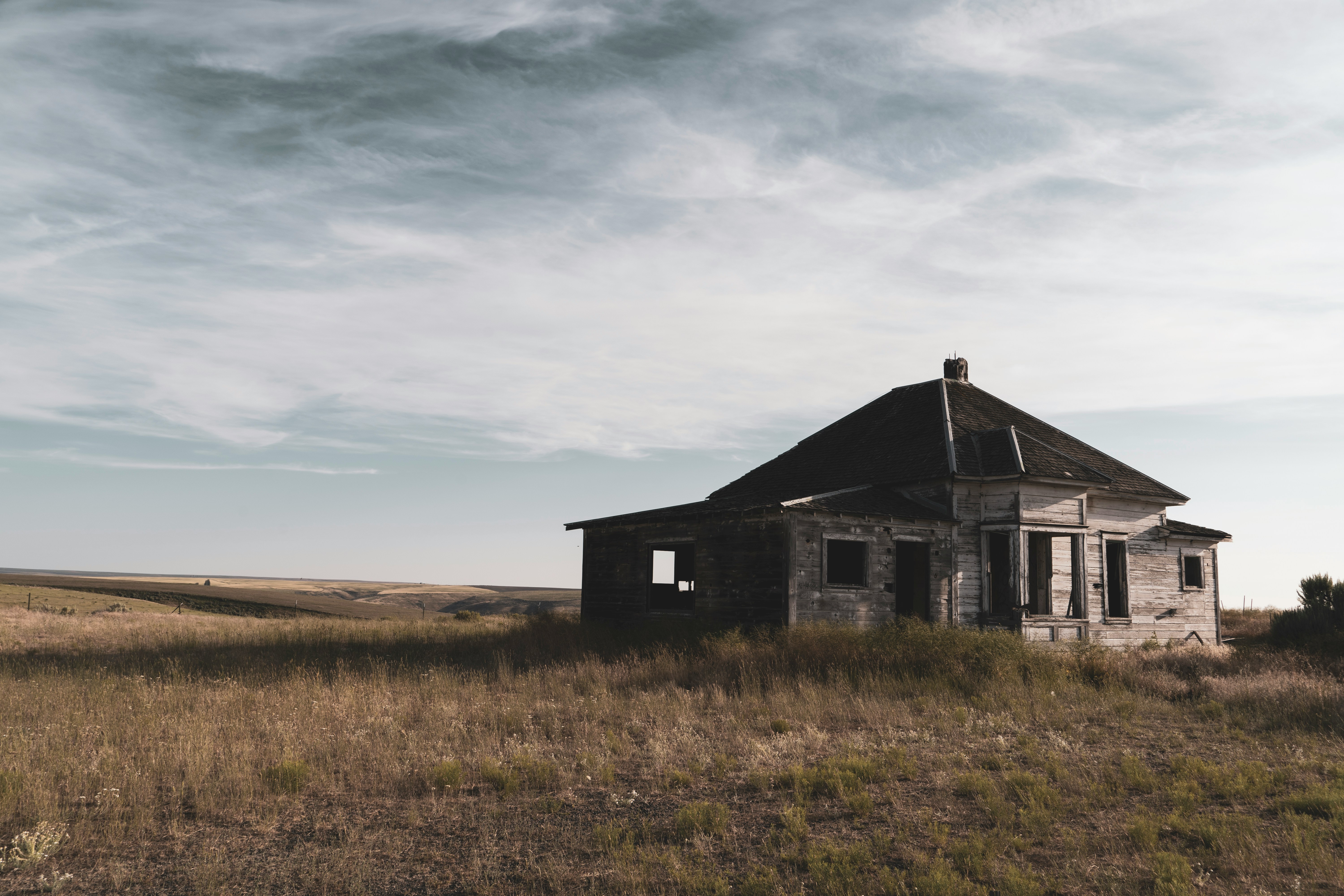“Apocalypse is in vogue,” wrote literary critic Lois Parkinson Zamora over 25 years ago, noting an upsurge of end-of-time narratives. A brief scan through today’s Netflix’s offerings (Black Mirror, The Walking Dead, Bodies, The 100, etc.) and any list of best sellers from the last 20 years (The Road, The Hunger Games, Station Eleven, etc.) is proof that the “apocalyptic” genre has now moved even more from the fashionable edges to the mainstream. Netflix even has a unique “Dystopian Futures” category. Why are we so drawn to these stories? Maybe the contemporary appeal of a final mass destruction narrative lies in its thrilling fear factor as we realize that we have the tools and perhaps the drive to destroy ourselves? But the realization that we have the tools to “end it all” is obviously not a new one (the nuclear age is no longer in its infancy); so the question remains, why is there such an intense, almost obsessive, contemporary fascination with dismal views of the “apocalypse”?
"In reading or viewing most contemporary dystopian narratives, we are faced with disasters of our own making, the consequences of a surrogate faith in technology and modernization." At this point, I am guessing that you are confused or frustrated by the interchangeable uses of the terms “apocalyptic” and “dystopian” in this essay. This is purposeful: considering this muddle of terminologies is a good place to begin attempting to answer the question about the popularity of the genre. The frequent contemporary usages of the term “apocalypse” often completely ignore its original meaning as “disclosure, unveiling” and become a general catch-all phrase for discussion of a sinister eschatology, a focus on “last things” that implies destruction without any sense of illumination, transformation, or redemption. The term “apocalyptic”—now largely secularized—has come to mean any cataclysmic story about the end of the world. And the term “dystopia”—a combination of two Greek words meaning “bad place”—is a more specific, ominous genre under the umbrella heading of “apocalyptic.” But in the contemporary collective cultural mindset, these two terms are used interchangeably because the “apocalyptic” or “post-apocalyptic” is almost always viewed as dystopian.
While variants of 19th-century dispensationalist Christian apocalypticism have largely influenced evangelical popular culture, the more mainstream use of “apocalyptic” tends to be divorced from notions of divine judgement, revelation, and making all things new. The growing development of disenchanted “apocalyptic” stories traces the increasing normalization of secularization while, at the same time, often expressing disillusionment with the promises of secular narratives, chiefly the failure of the myth of modernity that promises a material, temporal “heaven on earth.” In The Postmodern Condition, Jean Francois Lyotard focuses on this collective disillusionment with “the thought and action of the 19th and 20th centuries” that was “ruled by the idea of the emancipation of humanity” through the “progress of the sciences, technologies, the arts, and political freedom." According to Lyotard, faith in secular progress that will “liberate the whole of humanity from ignorance, poverty, backwardness, and despotism,” ultimately producing “enlightened citizens” has led to failure and destruction. In fact, he believes that our reliance on technology has made things worse than they were before: “Technoscientific development has become a means of deepening the malaise rather than allaying it. It is no longer possible to call development progress” (Postmodern Explained, 91). In reading or viewing most contemporary dystopian narratives, we are faced with disasters of our own making, the consequences of a surrogate faith in technology and modernization.
"In moments of crisis, such as those depicted in dystopian stories, the essential issues relating to life’s meaning are the story’s most urgent and enduring questions." Although these subversive stories fixate on the chaotic end of all things, they are still typically traditional in their linear narrative forms. In The Promised End: Eschatology in Theology and Literature, Paul Fiddes argues that narratives that follow a linear pattern reflect an eschatological desire for meaning to be revealed at the end. This desire for a denouement is also desire for a clarifying revelation. Although many dystopian stories don’t provide a redemptive ending, they often tell the truth about the fact that trust in the material reality of “progress” is a dead end. Yet the storytelling itself is often a revealing search for a meaningful end (whether or not this occurs). Even philosopher Jean Baudrillard, a self-proclaimed nihilist, argues that the popularity of stories about the end is to “compensate for not having had the chance to revere the beginning [l'origine].” The beginning and the end, Baudrillard says, “are the only two interesting moments.” Baudrillard implies that the popularity of the genre is based on the lynchpin, age-old questions of purpose and meaning: who are we, and why are we here? We see these longings very clearly in Don DeLillo’s groundbreaking 1985 novel, White Noise, when college professor Jack Gladney reflects upon the impact of an “airborne toxic event” that poisoned him and caused his family to seek refuge in a shelter. As he looks to a chemically-infused sunset, a beautiful spawn of the same compounds that solidified his toxic death sentence, he wonders who or what is behind the sky: “Don’t let us die, I want to cry out to that fifth century sky ablaze with mystery and spiral light . . . . Who decides these things? What is out there? Who are you?“(103). In moments of crisis, such as those depicted in dystopian stories, the essential issues relating to life’s meaning are the story’s most urgent and enduring questions.
In most dystopian stories, a group of survivors is left to navigate reality without the infrastructure of society. And in these moments of environmental devolution, one of the central questions to be explored is: what does it mean to be human? In the first season of AMC’s The Walking Dead, survivor Dale Horvath is a moral leader, instructing a remnant of humans after a viral pathogen has transformed most everyone else into zombies. At one point, he tells his fellow survivors, “The world we know is gone. But keeping our humanity—that’s a choice.” But what does it mean to keep “our humanity”? To do this, the remaining few need to know what distinguishes a human being from an animal—or a zombie. Dale tells the group that although they must kill zombies to survive, they must avoid killing other human beings, lest they become animals that merely follow a “survival of the fittest” instinct. In a poignant scene in season two of The Walking Dead, sheriff and group leader Rick Grimes wanders alone into an abandoned church and stares up at a large crucifix, asking for direction and discernment between right and wrong. In the same episode, Rick addresses his fellow survivors: “There's just a few of us now. So we've gotta stick together, fight for each other, be willing to lay down our lives for each other if it comes to that. It's the only chance we've got.” With this surprising allusion to John 15:3, Rick indicates that self-sacrifice is humanizing, perhaps even central to the distinctions between humanity and the symbolic “undead.”
"Like 28 Days Later, many dystopian stories aim to interrogate apathetic and/or inhumane cultural values that we have normalized." The zombie genre itself, starting with George Romero’s 1968 Night of the Living Dead, is a social commentary on the existential state of spiritual, moral, and emotional death often unknowingly experienced by citizens of contemporary consumerist societies. The very consumerism that has shaped us has also deadened us, so much so that in Romero’s 1978 Dawn of the Dead, the zombies all naturally gravitate toward and infest the mall. When one character is asked why the undead choose to go to the mall, he replies, “Some kind of instinct. Memory of what they used to do. This was an important place in their lives.” In post–Christian culture, these individuals were defined by their consumer choices—and this continues into death, creating a seamless connection between the “walking dead” and the “dead walking.” In Edgar Wright’s hilarious 2004 satire Shawn of the Dead, the aimless, deeply unserious protagonist shuffles around his flat, groaning and drinking beer, finally settling down to a video game. It’s both humorous and not surprising that once he leaves his house and encounters multiple zombies, it takes him well over 10 minutes to realize that these are the violent undead. The undead look and act like him, perhaps a bit like all of us. In Danny Boyle’s 2002 pandemic flick, 28 Days Later, the villainous truth-teller Major Henry West explains: “This is what I've seen in the four weeks since infection. People killing people, which is much what I saw in the four weeks before infection, and the four weeks before that, and before that, and as far back as I care to remember. People killing people, which to my mind, puts us in a state of normality right now.”
Like 28 Days Later, many dystopian stories aim to interrogate apathetic and/or inhumane cultural values that we have normalized. In Vancouverite Douglas Coupland’s 1998 novel Girlfriend in a Coma, the majority of the world falls asleep unto death, yet several of the “chosen” group of survivors cope by staying exactly the same as they were before, “watching an endless stream of videos, the floor clogged with Kleenex boxes and margarine tubs overflowing with diamonds and emeralds, rings and gold bullion—a parody of wealth” (209). In Nigerian American author Tochi Onyebuchi‘s 2020 Riot Baby, the author emphasizes that dystopia has been an everyday reality for those originally transported to the United States, not as people, but as dehumanized commodities. Blending elements of magical realism and historical fiction into a dystopian narrative, Onyebuchi highlights the violence of a police state and inequality in health care for Black Americans. Although these portions of the novel feel futuristic in their brutality, they are retellings of ongoing historical occurrences. Likewise, the cruel patriarchy of Gilead in Margaret Atwood’s 1985 The Handmaid’s Tale is based upon the truth of history: “The thing to remember is that there is nothing new about the society depicted in The Handmaid's Tale except the time and place. All of the things I have written about have been done before, more than once.” Atwood often highlights the devastating impact of invisibly incremental steps toward societal cruelty and oppression. In The Handmaid's Tale, protagonist Offred explains that, “Nothing changes instantaneously: in a gradually heating bathtub, you’d be boiled to death before you knew it.”
Although dystopian narratives can function as both warnings and prophetic critiques of normalized complacency, this is probably not the major draw (at least on a conscious level). Like any good art, these stories grapple with some of the primary questions that are ever-present in the hearts of human beings. But they distill the human experience in a moment of crisis so that society’s buffers are stripped away. When the world crumbles around us, who are we? Is there a purpose to our existence? How do we face death? Is there an author to our individual and collective stories? As Baudrillard explains, this obsession with the end is also an obsession with the beginning—these are the two most “interesting moments” that bookend our stories and tell us who we are.

